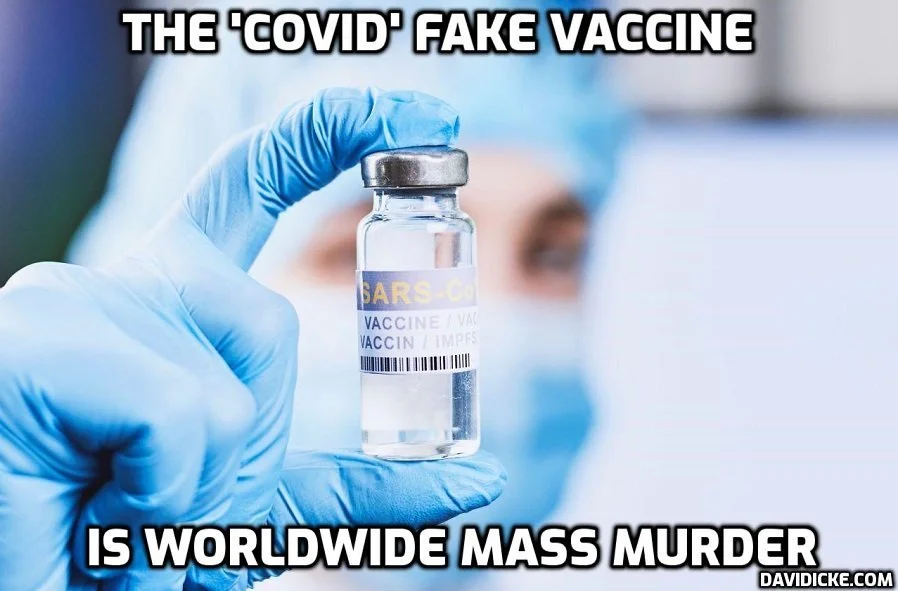Is it Voodoo or a Lack of Dependent Media Propaganda that is Preventing COVID From Spreading in Haiti? Only 649 Total Deaths in a Country of 11 Million People Not Wearing Masks, Less than 1% Vaxed
/According to "FUNKTIONARY:
mass media - "Massa' Media. Massa's media plus + Mass Hypnosis = Mindless Masses. 2) The "Mess" Media. 3) wholesale re-tale--retelling the whole tale (propaganda) exactly as you're told, consistently and relentlessly. How can you possibly relate when you are framed by the very debate wherein you are an unwilling spectator? Let's be perfectly cleat on this. There's no counter-option or outlet to vent when you're under the controlled thoughtform of mass-think manufactured consent. "Freedom of the press is limited to those who own one." -A.J. Liebling. (See: Media, T.V., Mass, Alienation, Spectacle Society, NEWS, ABCTV, Propaganda, Legislation & The New God Economy)
Dependent Media - Establishment (dependent) media is both unwilling and incapable of reporting events truthfully, accurately or without extreme bias. News coverage is just that - covering up (masking) and distorting the events and those wielding power behind the events (those reported and deliberately unreported). News coverage has simply become “disinfotaiment” with the sole purpose of perception and knowledge containment as well as reality concealment. You report in the interests of those who are paying you to do so. (see MEDIA, NBC & NEWS).
No Dependent Media in Haiti, No COVID Hoax; Haiti to Send Back Expiring US Moderna Vaccines. From [HERE] Haiti, which has one of the lowest Covid-19 vaccination rates in the Western Hemisphere, will be returning thousands of unused doses donated by the U.S. to keep them from expiring.
According to the NY Times Haiti, where the August earthquake killed at least 2,200 people, has fully inoculated less than 1 percent of its population. [MORE] In a country of roughly 11 million people, there have been an astoundingly low 649 deaths due to Covid-19 since the pandemic began. In December 2020 there had been a reported 234 deaths. The country has only reported 22,731 cases.
The COVAX Facility, which provides free and subsidized vaccines to the poorest nations, confirmed in an emailed statement Wednesday that the doses returned by Haiti will be redeployed elsewhere to “minimize any potential wastage.”
“Hundreds of thousands” of doses expiring in November will be sent to COVAX with the understanding that Haiti will receive a new batch in the future, Le Nouvelliste newspaper reported, citing health ministry officials. The exact number of vaccines being sent back was not confirmed by the government or the COVAX facility.
The U.S. donated 500,000 doses of the Moderna Inc vaccine to Haiti in July through COVAX -- an abbreviation for COVID-19 Vaccines Global Access. According to Haiti’s health ministry, fewer than 66,800 doses have been administered and only 20,354 people in the Caribbean nation of 11.4 million are fully vaccinated.
Lots of Problems in Haiti but COVID Isn’t 1 of Them: Doctor says Hospitals are Not Overrun w/COVID Patients in Crowded, Poor, Unvaccinated Country Not Practicing Social Distancing or Wearing Masks
Prior to the earthquake in December 2020 the Miami Herald reported: In Haiti, they are acting like COVID-19 doesn’t exist. Mask-wearing is an exception and not the norm; bands are playing to sold-out crowds; and Kanaval, the three-day pre-Lenten debauchery-encouraging street party is back on for February. . .
Across the border in the neighboring Dominican Republic, with roughly the same population, the pandemic has killed almost ten times the number, 2,364. Jet off to Miami-Dade County, home to one of the larger Haitian communities in the United States, and the death toll is even higher: 4,002 in a population of 2.7 million.
What’s going on? Nobody is sure. “We don’t have a large quantity of people who are in bad shape,” said Dr. Sophia Cherestal Wooley, deputy medical coordinator for Doctors Without Borders/Médecins Sans Frontières in Port-au-Prince. “They don’t get sick to the point that they need to be hospitalized and we don’t have the same quantity of people who have died here like in the Dominican Republic.
Shortly after the first imported case of COVID-19 was confirmed in Haiti on March 19, epidemiologists raised alarms. Taking into account Haiti’s weak health system, crowded living conditions and the population’s skepticism about the virus, they feared that the country, which has seen so much tragedy, would be overwhelmed by COVID-19 infections. At best, there would be 2,000 deaths, the models predicted. At worst, around 20,000. Even the Pan American Health Organization, citing a surge of Haitians crossing the border from the Dominican Republic to escape a spike there and the country’s ongoing political and humanitarian crises, voiced concerns about a pending crisis.
But fears that the deadly pandemic could unleash civil unrest and an even deeper humanitarian crisis have so far not proven accurate. “Today Haiti has been mildly affected compared to other countries in the region,” Dr. Sylvain Aldighieri, incident manager at the Pan American Health Organization, said. “But the collateral effects, the socioeconomics, health and nutritional are considerable.” Still, the low number of deaths is especially surprising because of the government’s own chaotic response and lax enforcement of its own rules.
Ministry of Health surveillance data show that Haiti experienced a first peak at the end of May into early June, and hospitalizations, while rising at one point, never reached critical levels. [MORE]









































































































































































































































































